The microbiome associated with equine periodontitis and oral health
- PMID: 27080859
- PMCID: PMC4832512
- DOI: 10.1186/s13567-016-0333-1
The microbiome associated with equine periodontitis and oral health
Abstract
Equine periodontal disease is a common and painful condition and its severe form, periodontitis, can lead to tooth loss. Its aetiopathogenesis remains poorly understood despite recent increased awareness of this disorder amongst the veterinary profession. Bacteria have been found to be causative agents of the disease in other species, but current understanding of their role in equine periodontitis is extremely limited. The aim of this study was to use high-throughput sequencing to identify the microbiome associated with equine periodontitis and oral health. Subgingival plaque samples from 24 horses with periodontitis and gingival swabs from 24 orally healthy horses were collected. DNA was extracted from samples, the V3-V4 region of the bacterial 16S rRNA gene amplified by PCR and amplicons sequenced using Illumina MiSeq. Data processing was conducted using USEARCH and QIIME. Diversity analyses were performed with PAST v3.02. Linear discriminant analysis effect size (LEfSe) was used to determine differences between the groups. In total, 1308 OTUs were identified and classified into 356 genera or higher taxa. Microbial profiles at health differed significantly from periodontitis, both in their composition (p < 0.0001, F = 12.24; PERMANOVA) and in microbial diversity (p < 0.001; Mann-Whitney test). Samples from healthy horses were less diverse (1.78, SD 0.74; Shannon diversity index) and were dominated by the genera Gemella and Actinobacillus, while the periodontitis group samples showed higher diversity (3.16, SD 0.98) and were dominated by the genera Prevotella and Veillonella. It is concluded that the microbiomes associated with equine oral health and periodontitis are distinct, with the latter displaying greater microbial diversity.
Figures
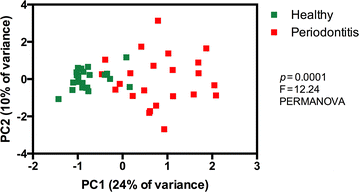
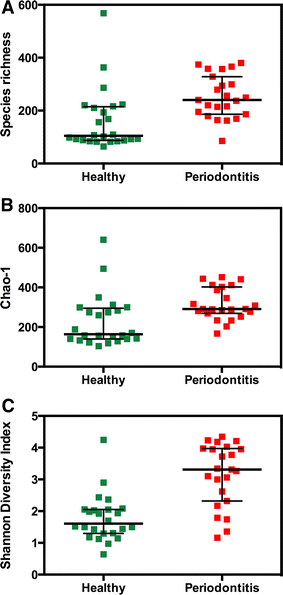
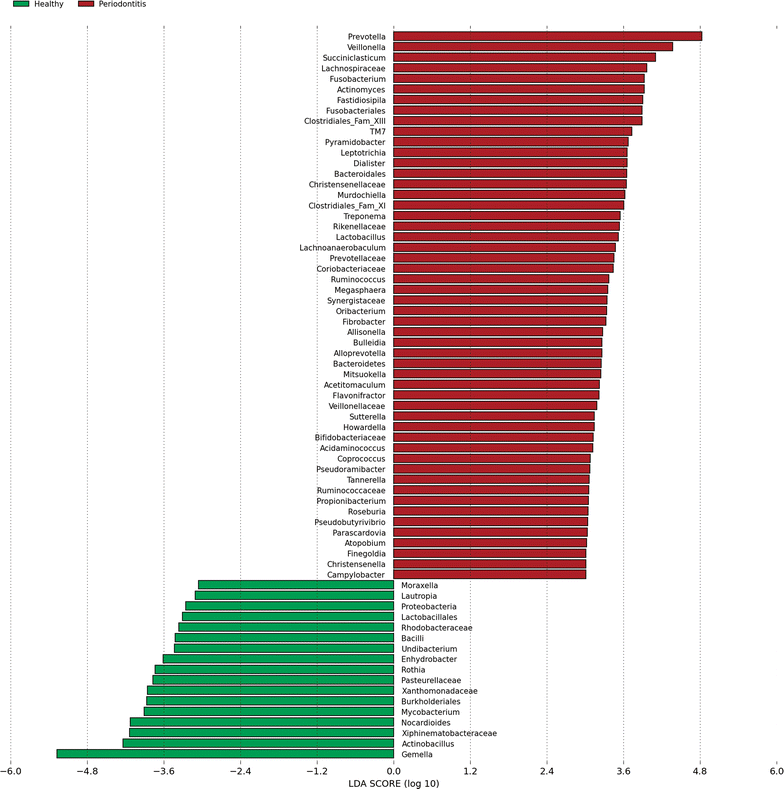
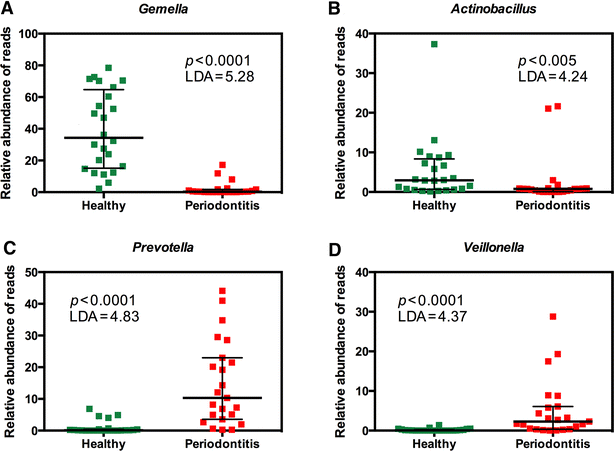
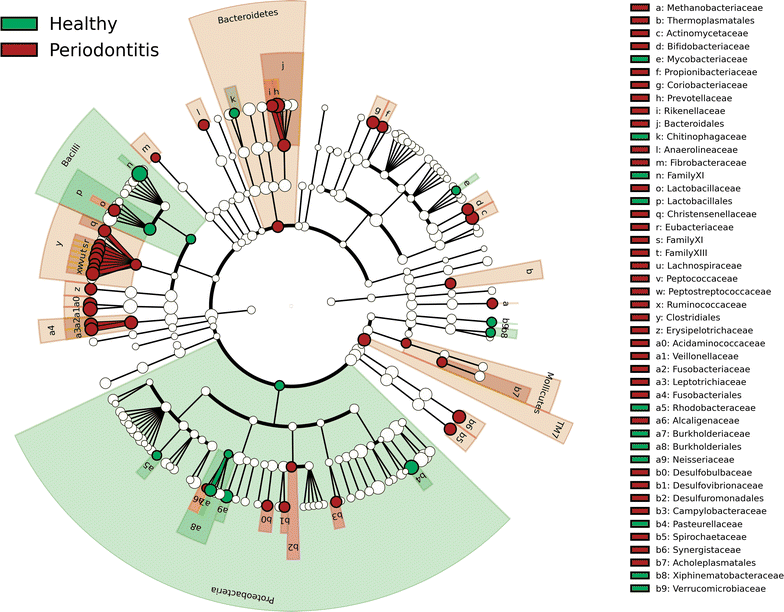
References
-
- Colyer JF. Variations and diseases of the teeth of horses. Trans Odontol Soc GB. 1906;38:42–74.
-
- Little WL. Periodontal disease in the horse. J Comp Pathol Therap. 1913;26:240–249. doi: 10.1016/S0368-1742(13)80041-0. - DOI
-
- Baker GJ. Some aspects of equine dental disease. Equine Vet J. 1970;2:105–110. doi: 10.1111/j.2042-3306.1970.tb04168.x. - DOI
-
- Dixon PM, Tremaine WH, Pickles K, Kuhns L, Hawe C, McCann J, McGorum BC, Railton DI, Brammer S. Equine dental disease part 2: a long-term study of 400 cases: disorders of development and eruption and variations in position of the cheek teeth. Equine Vet J. 1999;31:519–528. doi: 10.1111/j.2042-3306.1999.tb03862.x. - DOI - PubMed
Publication types
MeSH terms
Substances
Grants and funding
LinkOut - more resources
Full Text Sources
Other Literature Sources
Medical
Miscellaneous

